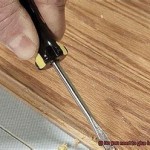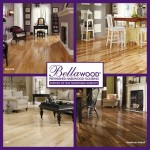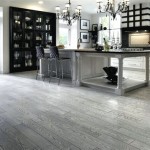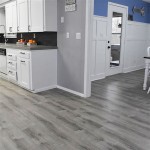Engineered Wood Flooring Underlay Thickness: A Guide to Choosing the Right Thickness
Engineered wood flooring offers a durable and stylish alternative to traditional hardwood floors. However, achieving a successful installation requires careful consideration of many factors, including the thickness of the underlay. The underlay is a critical component that sits beneath the engineered wood flooring, providing insulation, soundproofing, and support. Choosing the right underlay thickness is essential for ensuring a comfortable, quiet, and long-lasting floor. This article explores the importance of underlay thickness and provides a guide to selecting the appropriate thickness for your specific needs.
Understanding the Role of Underlay Thickness
Underlay serves multiple purposes, all of which are influenced by its thickness. Here's a breakdown of how thickness impacts performance:
- Impact Sound Reduction: Thicker underlays offer greater noise reduction, minimizing the transfer of footfall and other noises to lower floors. This is especially important in multi-story homes or apartments.
- Thermal Insulation: Underlay acts as a barrier against cold floors, particularly if your subfloor is concrete. Thicker underlays provide greater thermal insulation, keeping your feet warm and reducing heat loss from the room.
- Subfloor Leveling: Underlay can help to level out minor imperfections in the subfloor, creating a more stable and even surface for the engineered wood flooring. While thicker underlays can be more effective for leveling, it's important to address significant subfloor issues before installation.
- Support and Durability: Underlay provides a cushioning layer that absorbs shock and impact, protecting the engineered wood flooring from damage and extending its lifespan. Thicker underlays offer greater support and cushioning.
Factors to Consider When Choosing Underlay Thickness
Several key factors influence the optimal underlay thickness for your engineered wood flooring project:
1. Subfloor Type
The type of subfloor you have plays a significant role in determining the ideal underlay thickness. Concrete subfloors tend to be cold and require thicker underlays for thermal insulation and noise reduction. Wood subfloors, particularly those in good condition, may require thinner underlays depending on the specific requirements.
2. Existing Floor Height
If you have a high door threshold or limited space between the floor and the bottom of your doors, you may need to consider a thinner underlay. Assess the available height to determine the maximum thickness that can be accommodated without compromising on floor level.
3. Noise Reduction Needs
The amount of noise reduction you desire will influence the underlay thickness. If you live in a multi-story home or require significant soundproofing, a thicker underlay is recommended. For lower floors or less demanding noise reduction needs, a thinner underlay may be sufficient.
4. Engineered Wood Flooring Thickness
The thickness of the engineered wood flooring itself also plays a role in underlay selection. Thinner engineered wood flooring generally requires a thicker underlay to achieve the desired level of support and cushioning. Conversely, thicker flooring may need a thinner underlay.
5. Underlay Material
Different underlay materials have varying properties and levels of compression. Some materials, such as foam, are more compressible than others, like cork. The compressibility of the underlay can affect the overall thickness and performance. It's important to choose an underlay material that is compatible with the specific needs of your project.
Common Underlay Thicknesses and Their Applications
Here's a general overview of common underlay thicknesses and their typical uses:
- 1/8" (3 mm): This thickness is suitable for applications where minimal noise reduction or thermal insulation is required. It's often used for wood subfloors or when limited height is available.
- 1/4" (6 mm): This thickness provides a moderate level of noise reduction and thermal insulation. It is a popular choice for most residential installations.
- 3/8" (9 mm): This thickness offers greater noise reduction and thermal insulation, making it ideal for multi-story homes, apartments, or areas where significant soundproofing is desired. It can also be used for leveling minor subfloor imperfections.
- 1/2" (12 mm): This thickness is generally reserved for specific situations where maximum noise reduction, thermal insulation, or subfloor leveling is required. It may be an option for concrete subfloors or areas with significant subfloor imperfections.
Keep in mind that these are just general guidelines, and the best underlay thickness for your project will depend on your specific needs and requirements. It's always best to consult with a flooring professional for expert advice.

Does Wood Flooring Need Underlay Greyspace

Underlayment Buyer S Guide

The Advantages Of Poly Foam Underlay Blog Floorsave

What Is The Best Underlay For Laminate Flooring Or Engineered Wood Floor

Engineered Wood Flooring Thickness Flooring365

Silver Laminate And Wood Flooring Underlay 3mm

Underlayment Buyer S Guide

Engineered Wood Flooring Thickness Flooring365

Heat Therm Underlay For Underfloor Heating Ewa3

2mm 3mm Thickness Engineered Laminated Wood Flooring Underlay Rubber Eva China Floor Laminate Made In Com
Related Posts








